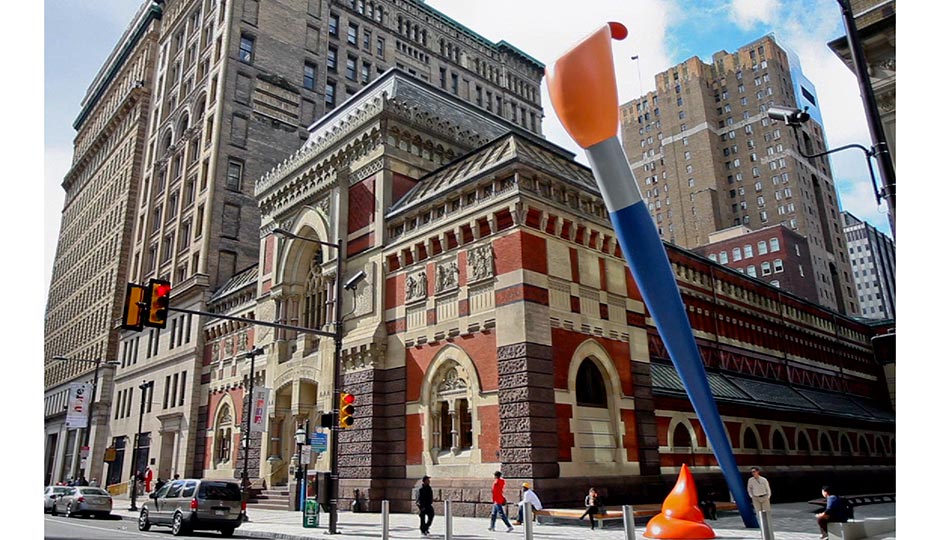What’s the Future of PAFA in a STEM-Obsessed America?

Photo | GPTMC
The news earlier this year that venerable Sweet Briar College in Virginia was closing its doors despite a hundred years of history and an outstanding national reputation intensified shock waves already moving through the world of higher education. A senior vice president at Moody’s predicted more college closures to come, while the Department of Education announced it was monitoring 544 colleges and universities it considers to be on shaky financial ground. When the National Association of College Admissions Counselors in May released its annual tally of colleges that had yet to meet their enrollment targets for next fall, there were 18 Pennsylvania schools on the list. Seven of those were local: Cabrini College, Delaware Valley University, Eastern University, Gwynedd Mercy College, Holy Family University, St. Joseph’s University … and the Pennsylvania Academy of the Fine Arts.
Okay, most of those are small liberal arts colleges — the sorts of places that, like Sweet Briar, are most likely to be facing economic straits. But PAFA? That two-centuries-old art school-cum-museum housed in a wedding-cake Frank Furness palace at Broad and Cherry? The school at which such prominent artists as Mary Cassatt, Thomas Eakins, Wharton Esherick, Benjamin West, Alexander Stirling Calder and David Lynch studied and/or taught? How could easels at such a renowned institution be going unused?
It’s simply a matter of demographic trends, according to PAFA dean of enrollment André van de Putte. After two decades of steady growth in the number of high-school graduates, the U.S. reached a peak in 2011 of 3.4 million and began a decline that’s expected to continue at least through 2020. To compete for this smaller pool of grads, more and more schools, van de Putte says, are moving into “rolling admissions,” continuing to accept applications past the traditional spring deadline to try to fill empty seats. PAFA is in its second year of the rolling model.
Van de Putte’s colleague, assistant director of admissions A.J. Sutton, points out that PAFA only has 60 to 70 students in each freshman class and offers just five majors — painting, drawing, illustration, printmaking and sculpture. Some parents, she acknowledges, are “apprehensive about their children choosing fine art as a college degree.” No wonder, when the culture is increasingly pushing for utilitarian STEM majors; President Obama himself is spearheading a government drive for more science, technology, engineering and math degrees. And van de Putte notes that college costs and the burden of student loans have become more worrisome for both parents and students in recent years.
But adaptation to changing circumstances, he adds, is “the only universal in higher education these days.” And tiny PAFA is fighting back. Starting this year, it’s rolling out an innovative “low-residency” MFA program that lets students spend just three summers on campus and take courses online during two traditional spring/fall sessions, keeping in touch with professors electronically while they’re away: “They’ll critique your work long-distance,” says Sutton, via iPads equipped with the Canvas learning app. That program, according to van de Putte, is already enrolled above capacity. And PAFA has some unique perks besides rich traditions and that glorious home base. Its dorms — in the Park Towne Place Apartments on the Ben Franklin Parkway — are more luxe than your usual college address, with four students typically sharing two bedrooms, a living room, a full kitchen and a bath.
Plus — shhh! — there’s PAFA’s secret path to the Ivy League. Since 1929, the fine-arts-only school has offered a dual BFA degree with the University of Pennsylvania. True, would-be students have to be admitted to both PAFA and Penn (it’s the College of Liberal and Professional Studies), but the PAFA admittance comes first. This dual degree is the only way to earn a BFA from Penn, Sutton points out, and adds that the Ivy League institution admits “nearly 100 percent” of PAFA-accepted applicants.
And surprisingly, PAFA’s a bargain. Even with those ritzy Park Towne Place dorms, the cost of tuition, room and board and fees for the 2015-’16 school year is $52,770, compared to $64,200 for this fall’s Penn freshmen and $57,100 at St. Joe’s. Financial aid and scholarships are available. And though Salary.com recently ranked fine arts one rung from the bottom (only sociology was worse) on its list of “Eight college degrees with the worst return on investment,” Sutton, herself a recent PAFA alum, says the school’s graduates have “a very low student loan default rate.” That could point to rich mommies and daddies — or to the value of a PAFA degree.
Follow @SandyHingston on Twitter.


